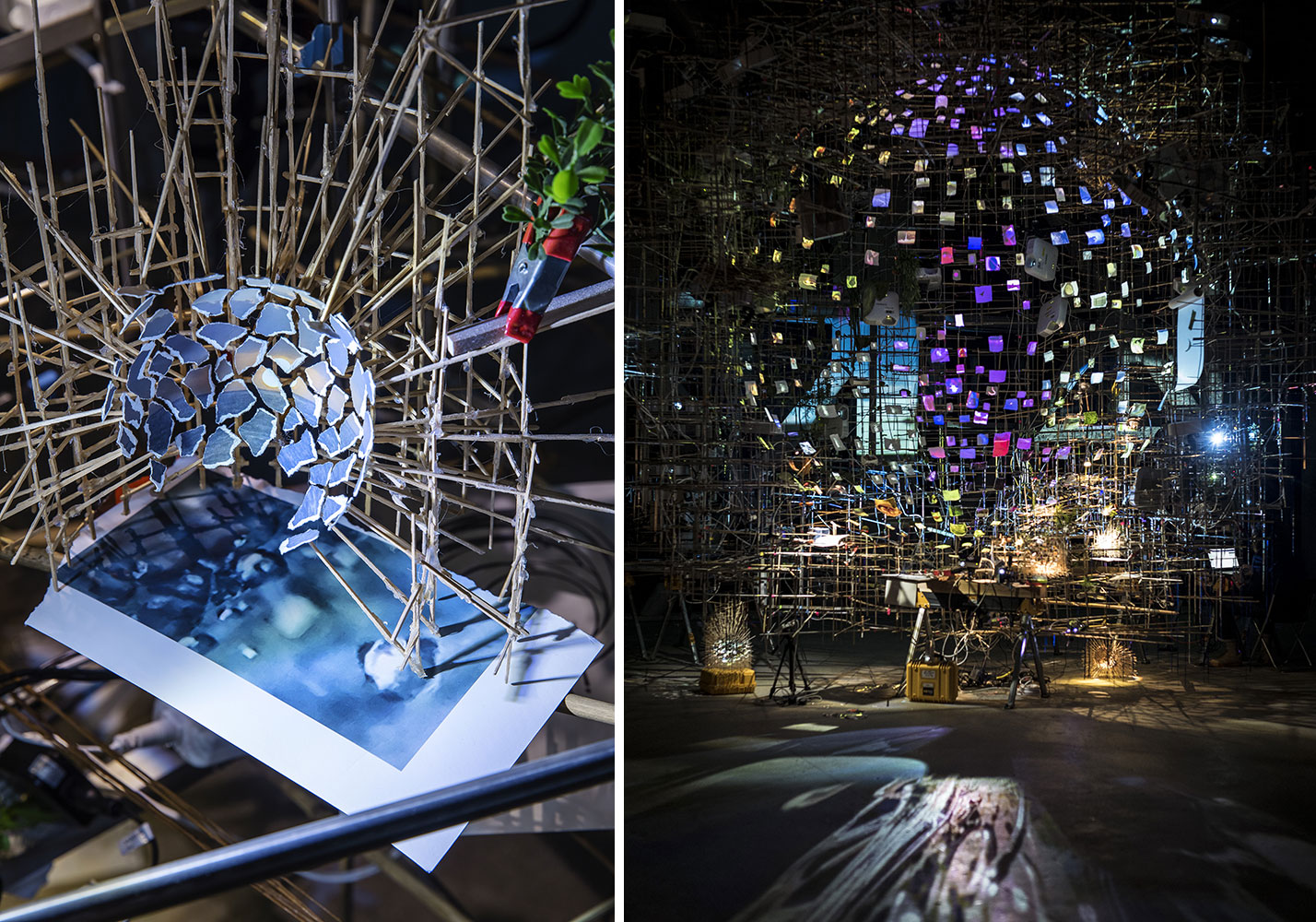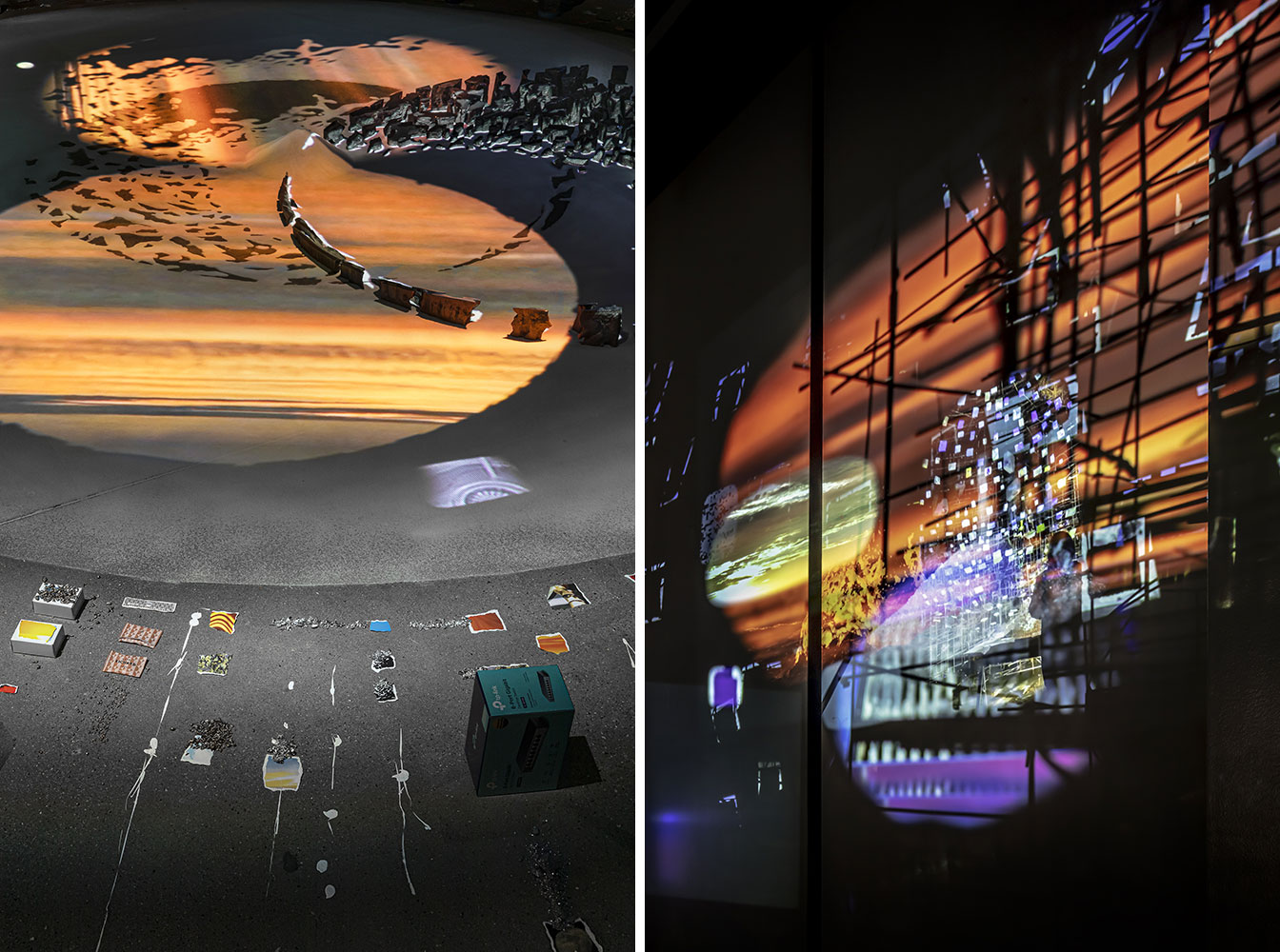ART CITIES:Paris-Sarah Sze
 Since the late 1990s, Sarah Sze has created intricate assemblages of everyday objects that blur the boundaries between painting, sculpture, and architecture. In the last five years, she has reintroduced video into her work to explore the growing influx of images in our daily lives and examine how their proliferation has fundamentally changed our relationship to objects, time, and memory.
Since the late 1990s, Sarah Sze has created intricate assemblages of everyday objects that blur the boundaries between painting, sculpture, and architecture. In the last five years, she has reintroduced video into her work to explore the growing influx of images in our daily lives and examine how their proliferation has fundamentally changed our relationship to objects, time, and memory.
By Efi Michalarou
Photo: Fondation Cartier Archive
For “Night into Day”, her second solo show at the Fondation Cartier pour l’art contemporain, Sarah Sze created an immersive installation that transforms the visitor’s perception and experience of Jean Nouvel’s building. For her upcoming exhibition, the artist explores the way in which the proliferation of images (printed in magazines, gleaned from the Web, intercepted from outer space) fundamentally changes our relationship to objects, time and memory. Confusing the boundaries between inside and outside, mirage and reality, past and present, her new installation will bring together for the first time in her work the architectural, the sculptural and the filmic, altering the visitor’s perception of space and time. Playing with the transparency of the architecture Sze casts moving images onto the glass walls of the ground floor galleries, turning the building into a magic lantern as they collide, shift in scale, disappear and reemerge. Upon entering the building, visitors are drawn to a fragile planetarium-like sculpture that seems to float in the gallery space. The spherical sculpture is composed of photographs, objects, light, sound and video projections on torn paper, all held in an orchestrated suspension by a delicate scaffolding of bamboo and metal rods. The imagery Sze collects shifts in scale from the vast to the minute. Much of the imagery depicts the timeless elements of nature: earth, fire, water; and natural processes: the movement of clouds, the eruption of a geyser or the growth of a plant. Other images, shot from an iPhone or culled from the Internet, capture materials from daily life being transformed before our eyes: shaving chalk, cutting foam, burning wood—offering the viewer an experience of the tactile in our image-saturated world. Sze splices together disparate content that viewers, upon moving through the space, edit together through the act of seeing and reading images to create their own narrative of the work. “Twice Twilight” and “Tracing Fallen Sky”, created specifically for this exhibition, are the latest works from Sze’s “Timekeeper” series, begun in 2015, which investigates the image and the increasing overlaps in our experience of the virtual and material worlds. The planetarium and the pendulum, age-old scientific tools designed to map the cosmos and trace the earth’s rotation, inspired the structure of these sculptures. Sze has long been interested in scientific models as tools to measure time and space and to explain the natural world. In conjunction with the exhibition the Fondation Cartier has produced “Night Vision” the artist’s first work using augmented reality technology. Comprised of videos drawn from the installations “Twice Twilight” and “Tracing Fallen Sky”, the application transforms visitors’ perception of reality by bringing them into a dreamlike nocturnal environment. A sound piece created by Sarah Sze heighten the experience. The application is available exclusively on ipads at the Fondation Cartier during the first month following the opening of the exhibition, then downloadable from the Apple Store and Google Play from November 24 onwards.
Photo: Sarah Sze, Night into Day, View from the exhibition at the Fondation Cartier pour l’art contemporain from the garden, 2020, Photo © Luc Boegly
Info: Curator: Leanne Sacramone, Assistant Curator: Maëlle Coatleven, Fondation Cartier pour l’art contemporain, 261 Boulevard Raspail, Paris, Duration: 24/10/2020-7/3/2021, Days & Hours: Tue 11:00-22:00, Wed-sun 11:00-20:00, www.fondationcartier.com






